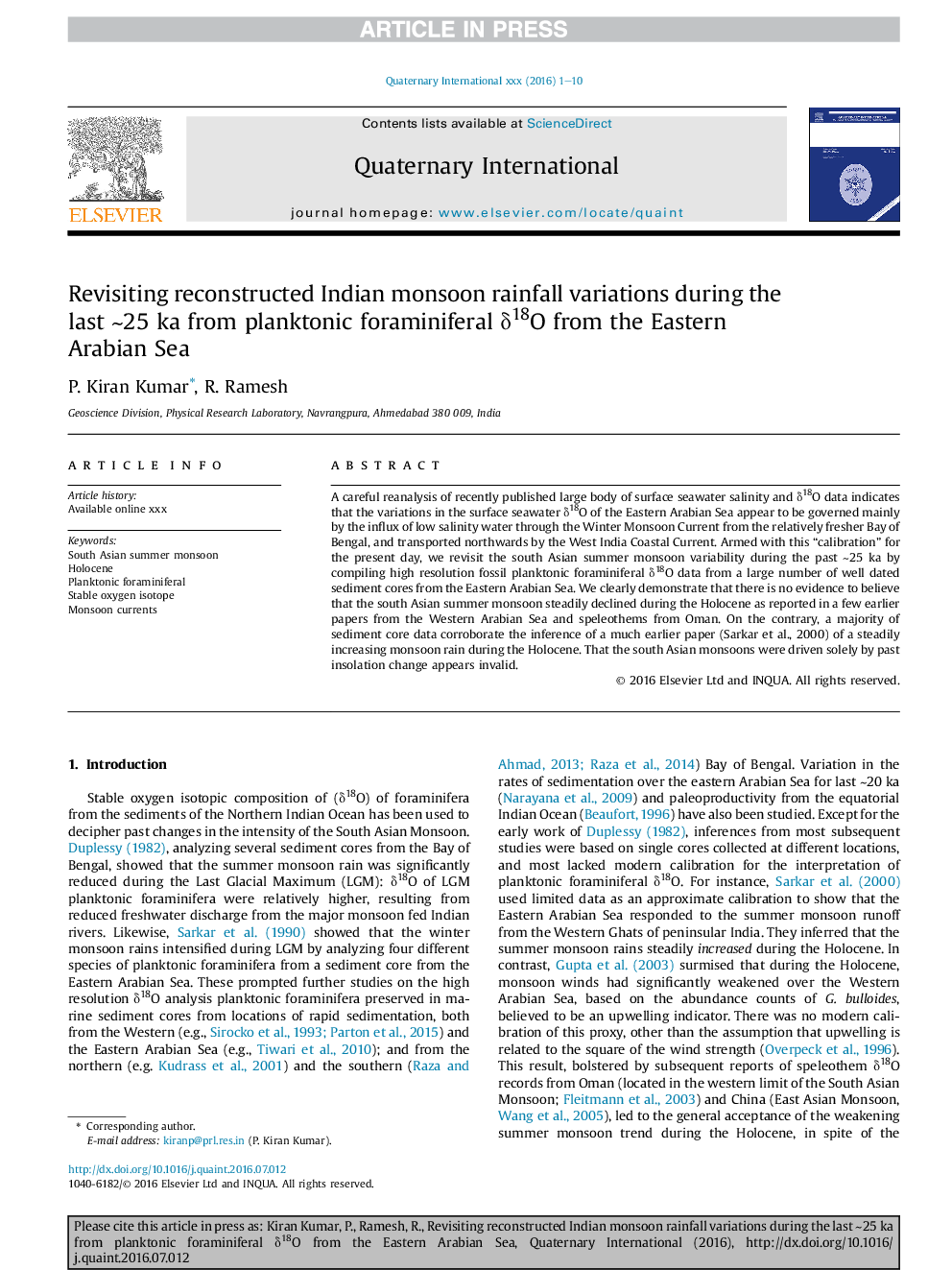| Article ID | Journal | Published Year | Pages | File Type |
|---|---|---|---|---|
| 5113124 | Quaternary International | 2017 | 10 Pages |
Abstract
A careful reanalysis of recently published large body of surface seawater salinity and δ18O data indicates that the variations in the surface seawater δ18O of the Eastern Arabian Sea appear to be governed mainly by the influx of low salinity water through the Winter Monsoon Current from the relatively fresher Bay of Bengal, and transported northwards by the West India Coastal Current. Armed with this “calibration” for the present day, we revisit the south Asian summer monsoon variability during the past â¼25 ka by compiling high resolution fossil planktonic foraminiferal δ18O data from a large number of well dated sediment cores from the Eastern Arabian Sea. We clearly demonstrate that there is no evidence to believe that the south Asian summer monsoon steadily declined during the Holocene as reported in a few earlier papers from the Western Arabian Sea and speleothems from Oman. On the contrary, a majority of sediment core data corroborate the inference of a much earlier paper (Sarkar et al., 2000) of a steadily increasing monsoon rain during the Holocene. That the south Asian monsoons were driven solely by past insolation change appears invalid.
Keywords
Related Topics
Physical Sciences and Engineering
Earth and Planetary Sciences
Geology
Authors
P. Kiran Kumar, R. Ramesh,
